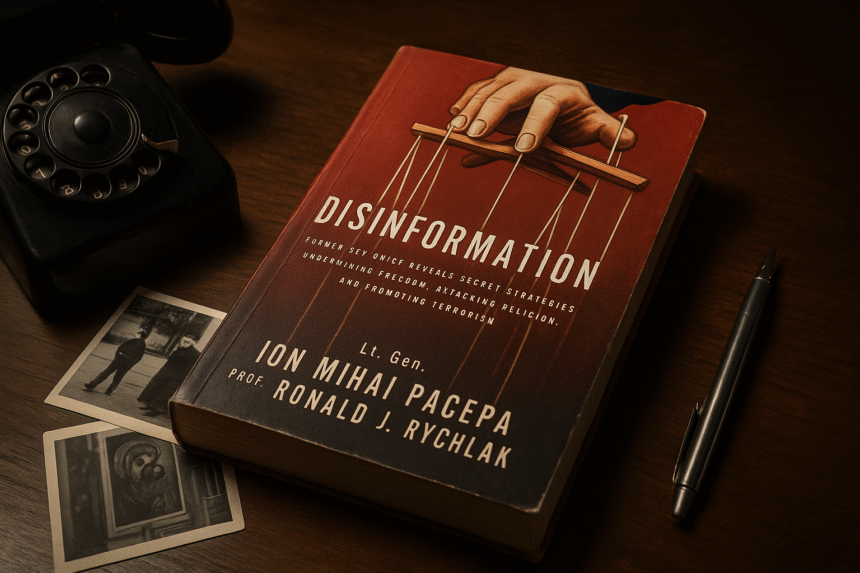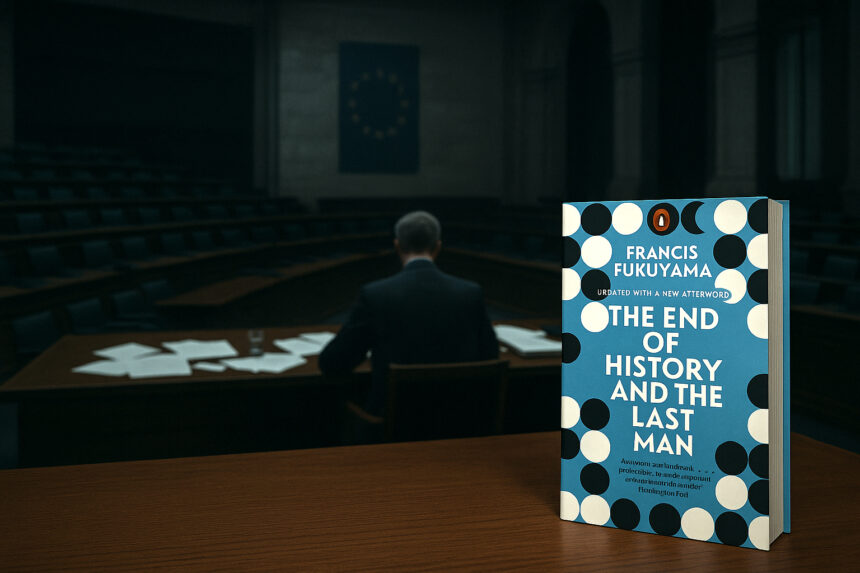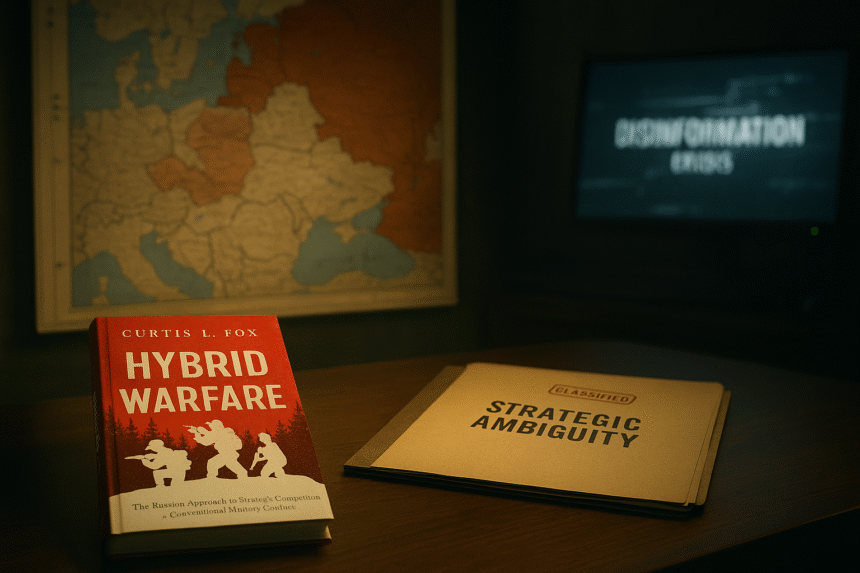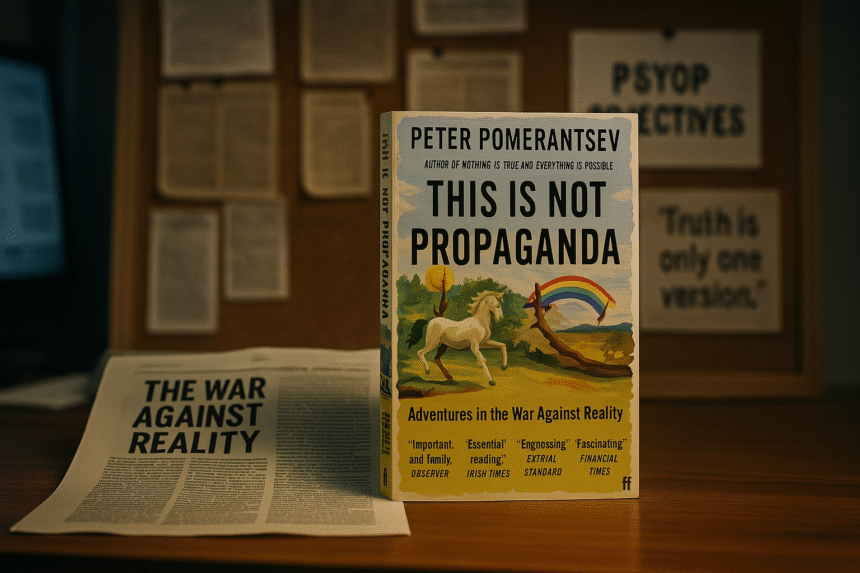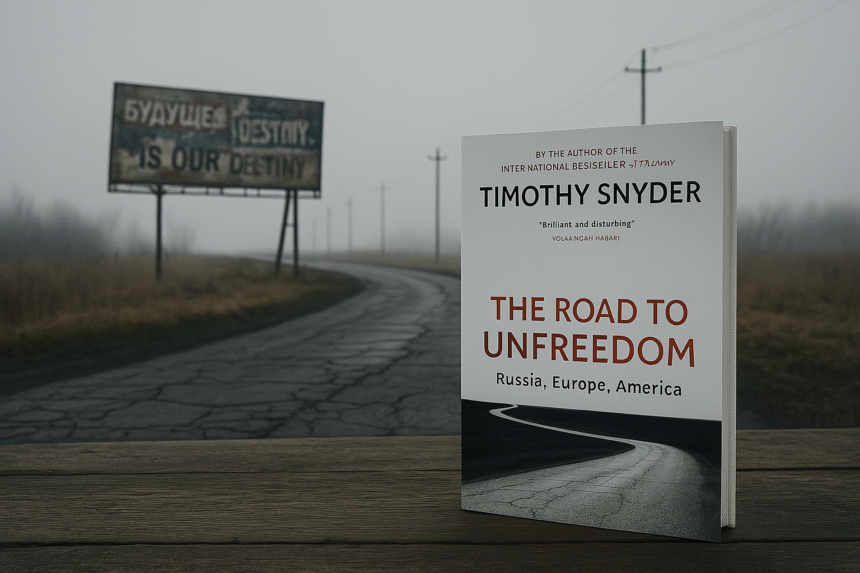Memory as the First Casualty
There is a form of war in which no soldier fires a shot, no territory is seized, and yet civilisations are bent toward entropy. This war is fought through memory, language, and faith. Its generals wear no uniform. Its casualties remain unrecorded. It alters the structure of truth by making it unstable, invisible, or interchangeable with lies. This war is not coming. It never ended. Disinformation is its record.

A Weaponised Memory System
Disinformation is more than a Cold War account. It offers a frontline report from within the epistemic battlefield that redefined statecraft across the twentieth century. Co-authored by Ion Mihai Pacepa—former chief of Romanian foreign intelligence—and legal scholar Ronald J. Rychlak, the book reveals how Soviet intelligence engineered truth, not merely concealed it.
Rather than spying to learn secrets, the KGB designed strategies to manufacture meaning. They understood that memory, not ideology, shaped civilisational momentum. Through active measures, they built a machinery of cultural manipulation that could bend perception in real time. As a result, dezinformatsiya became more than a tool—it emerged as the primary vector of institutional sabotage.
“Disinformation was not simply a tactic. It was a parallel form of warfare—one that aimed not to destroy armies, but to reprogram societies.”¹

Framing as Doctrine: The Epistemology of Strategic Lies
The most devastating weapon used in this war wasn’t a bomb—it was the frame. Framing allowed the Soviets to rewrite identities and histories without firing a single shot. Crucially, these frames were never presented as propaganda. They arrived embedded in journalism, literature, and even ecclesiastical debate.
Take, for example, the case of Pope Pius XII. Soviet intelligence targeted him long after his death. Their goal was not just to smear his legacy—it was to invert it. They engineered the idea that he had collaborated with Hitler, despite his documented efforts to protect Jews during the Holocaust. This inversion gained global traction through The Deputy, a play written by Rolf Hochhuth and pushed through channels the authors trace back to the KGB.²
“Never before had one lie been so effectively planted in the Western historical imagination.”³
Through these operations, the Kremlin demonstrated how manipulated perception could outlive the facts. Once a narrative takes root, even archival evidence struggles to reclaim ground.

The Soviet War on Religion
Nowhere was this disinformation model more aggressively deployed than in the war on religion. The Soviet system recognised that moral authority—especially religious—posed a deeper threat than military hardware. As a result, the KGB targeted institutions that rooted Western societies in metaphysical order.
According to the authors, infiltration of the World Council of Churches allowed Soviet operatives to insert ideological agents into ecumenical networks. Metropolitan Nikodim, identified in Soviet files as Agent “Adamant,” played a pivotal role in realigning theological institutions with Soviet political messaging.⁴
At the same time, disinformation operatives helped embed Marxist ideology into Catholic liberation theology in Latin America. By reinterpreting scripture through the lens of class struggle, they successfully severed portions of the Church from its traditional centre.⁵
Beyond Christianity, the KGB even sought to manipulate Islamic radicalism. They distributed The Protocols of the Elders of Zion throughout the Middle East, fusing antisemitic conspiracy with religious grievance. By 1978, they had deployed thousands of operatives across the region. Their aim was to radicalise, weaponise, and redirect religious identity, while appearing absent from the scene.⁶
“The Kremlin found in radical Islam a natural partner — one that could be programmed to hate the United States, the Jews, and the Church, all while shielding Moscow from attribution.”⁷

Rewriting America from Within
While these operations fractured religious unity abroad, a parallel campaign unfolded inside the United States. Disinformation was used to erode civic trust, racial solidarity, and institutional legitimacy. The book details how Soviet-aligned fronts inside the U.S. stoked racial tension by exaggerating church arsons and fabricating data.⁸
These operations were never intended to change legislation or even public opinion directly. Instead, they seeded perpetual suspicion. Over time, this suspicion corroded the basic shared assumptions that allow democracies to function. This was the true genius of Soviet narrative warfare: it turned doubt into policy without ever having to govern.

Continuity: Post-Soviet Strategy in a Digital Landscape
Although the Soviet Union fell, its narrative warfare model endured. As the authors argue, the same operational logic now drives post-Soviet disinformation under Vladimir Putin, even as it spreads across global media ecosystems.
What has changed, however, is the distribution model. While the KGB once relied on intermediaries and forgery, today’s digital platforms act as automated amplifiers. Algorithms, trained on user preferences, perform much of the cognitive segmentation that once required teams of agents.
Disinformation is now ambient. It emerges from everywhere and points nowhere. Consequently, the burden of defence has shifted—from intercepting falsehoods to rebuilding cultural immunity.
“The weaponisation of narrative does not merely conceal the truth — it recodes who has the right to speak it.”⁹
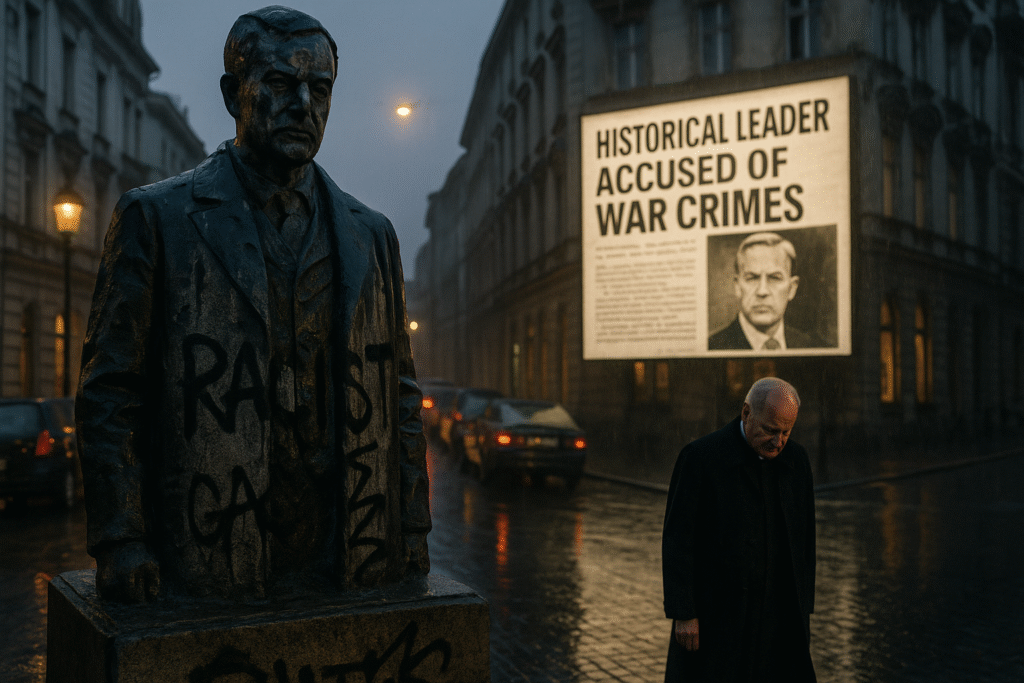
Memory as Strategic Terrain
Disinformation functions as more than an exposé. It is a guide to how modern societies become internally compromised without occupation or invasion. The book does not merely reveal what the Soviets did—it explains how truth collapses when institutions fail to defend the architecture of meaning.
In today’s Europe, where memory itself is contested, this book becomes operationally vital. Without a counter-theology of narrative resilience, democracies will remain vulnerable to epistemic insurgency.
The Front Is Cognitive. The Threat Is Real.
If this review clarified the architecture of narrative warfare, share it. Support Frontline Europa as we expose the informational sabotage mechanisms still shaping public consciousness.
Support independent journalism.
References
- Pacepa, I.M. and Rychlak, R.J., Disinformation: Former Spy Chief Reveals Secret Strategies for Undermining Freedom, Attacking Religion, and Promoting Terrorism, Washington, D.C.: WND Books, 2013, p. 34.
- Ibid., pp. 142–150.
- Ibid., p. 149.
- Ibid., pp. 194–199.
- Ibid., pp. 202–210.
- Ibid., pp. 278–285.
- Ibid., p. 278.
- Ibid., pp. 15–18.
- Ibid., p. 347.
